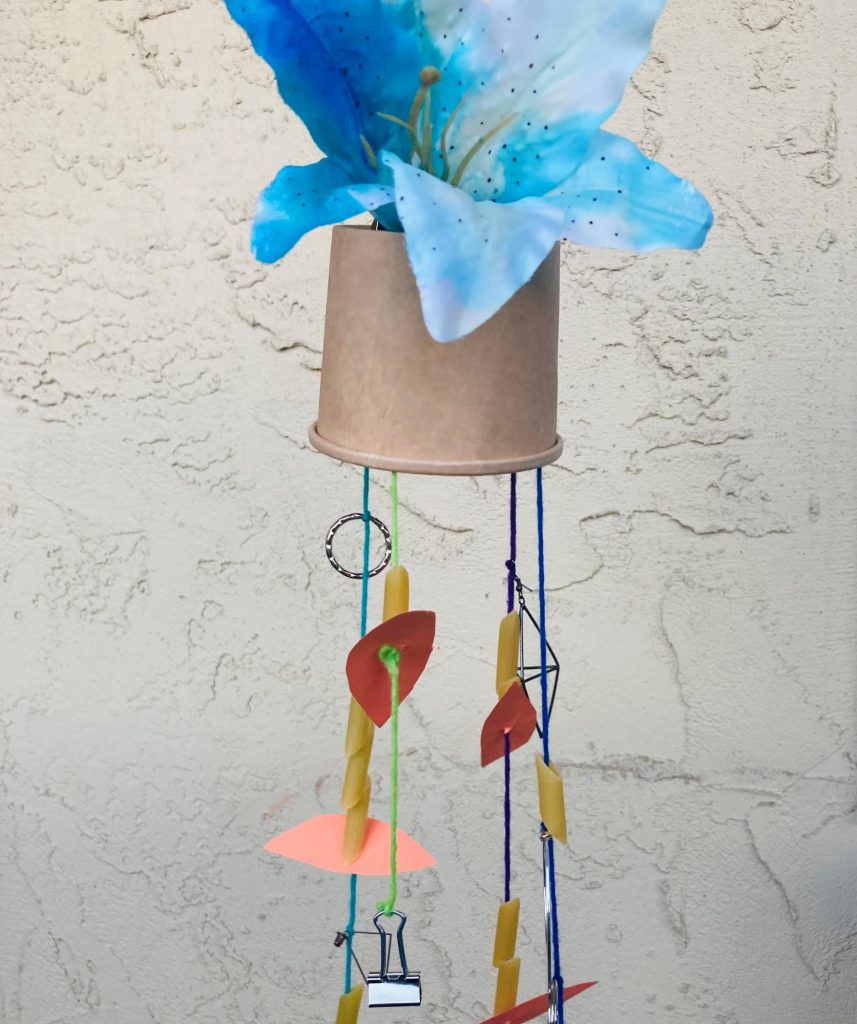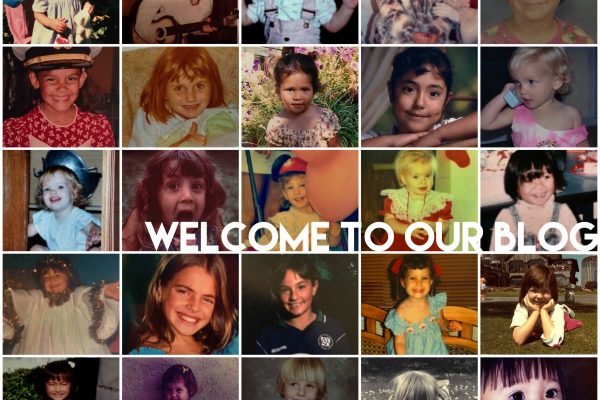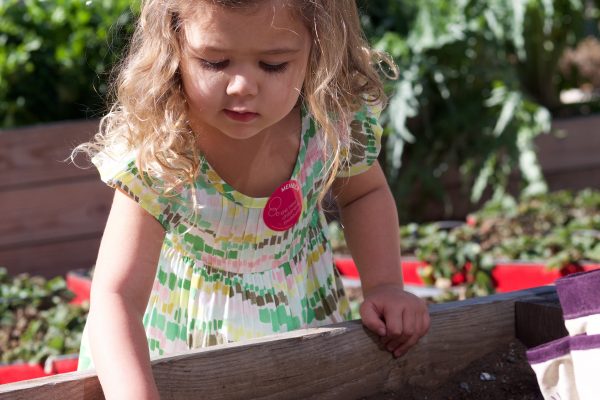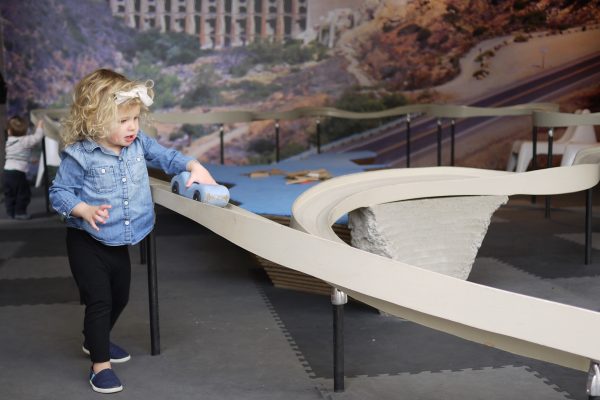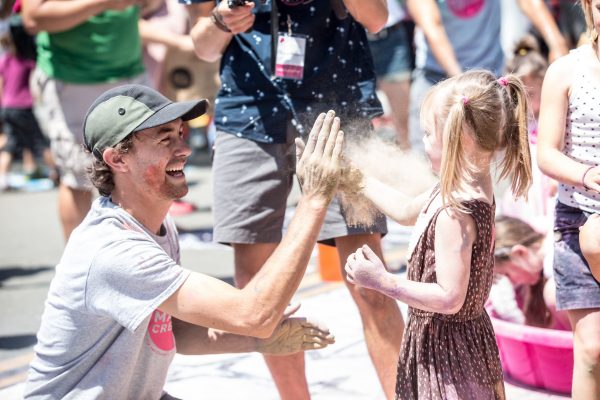Toddler Time at Home: Wind Chime Art
Honor those you miss by creating a wind chime with your child in this ScholarShare 529 Toddler Time at Home activity. This Chiming Reminder project is inspired by Katie Ruiz’s illustrated children’s book, Brian the Wildflower, about a wildflower named Brian who wants to see more than the garden he was grown in. The book helps children understand the cycle of life and passing on. Spend quality time with your child and engage in this artful activity dedicated to the special people in our lives that we miss. Through this project, your toddler will explore an array of developmental learning opportunities that can encourage fine motor movement, as well as conversation, storytelling and healing.
Chiming Reminder (Wind Chime) Tutorial
AGE: 2+ years (with adult support)
TIME FRAME: 45 min
SUPPLIES:
- Base (object to connect the strings to)
- Twine or Yarn
- Tape
- Objects that can be strung/tied to base and make sound (metal, plastic, beads, dried pasta, bells, etc.)
- Paint
- Stickers or collage materials + glue (optional)
- Nature elements (artificial plants and flowers)
Directions
1. Read Brian The Wildflower by Katie Ruiz with your child and engage in conversation. You can also watch the virtual Toddler Time at Home reading of her book here. Encourage language development by asking open-ended questions such as, “What do you see?” “How do you think that makes Brian feel?” “What do you imagine?” Make observations together and think about how to relate the story to real life experiences.
2. Find the base of your wind chime. This can be a recycled object or anything that strings can be attached to (e.g. the base of a water bottle or paper cups). Encourage your child to create art on the base using paint or collage materials. Tape or hole punch the top or bottom edges of the base to attach your strings. To hang your wind chime, create a loop with string and tape it to top of the base.
3. Create the strings of the wind chime. Decide on the number of strings that will hang down from the wind chime’s base and cut your strings to the desired length. Then, collect objects to tie and thread onto your strings. Consider objects that can be easily held and manipulated by your child and might make interesting sounds when strung together (e.g. metal clips, plastic silverware, beads, dried pasta, bells).
4. String the objects together. Tape one end of each string to a flat surface so your child can begin stringing the objects. After each object is strung, you can help your child to tie a knot to keep the object in place if desired. After stringing all the objects, secure the bottom of the string by tying a knot. The taped end of the string can then be used to attach to the base of your wind chime.
5. Find a special place to hang your wind chime! Listen to the sounds and watch the wind chime move with the breeze. Talk with your child about that special person and special moments. Take time to feel their presence. We may not be able to see that person anymore, but we can remember them through moments and stories shared through this artful Chiming Reminder project.
Tips
- Supervise your child with the smaller objects. These are great opportunities to model language and ways to explore safely.
- Provide support and redirection when needed, and find ways for your child to engage and take the lead.
- For older learners: Encourage your child to work through challenges and discover ways to string objects, explore with patterns, textures, shapes and sizes.
- For younger learners: Provide support with stringing or tying objects to the strings. Adding materials to the base is a great way for your child to be fully engaged and independent.
Toddler to Transitional Kindergarten Learning Connections
Young children who experience grief and loss may express a range of emotions along with behavior changes. Art is a great way to express and process those emotions. Reading age-appropriate books about loss can also lead to rich conversations which can support your child.
Recommended Reading:
- Brian the Wildflower by Katie Ruiz (Purchase the book in our Museum store or on the author’s website)
- The Goodbye Book by Todd Parr
- Something Small by Rebecca Honig
Caregiver Resource: Helping Your Toddler Cope with Grief and Death by Rebecca Parlakian
Preschool Learning Foundations Standards (Social Emotional Learning, Visual Arts, Language + Literacy, Mathematics)
Age 48 Months:
- Seek to understand people’s feelings and behavior, notice diversity in human characteristics, and are interested in how people are similar and different.
- Use language to construct short stories that are real or fictional.*
- Children begin to compare and order objects.
- Demonstrate some motor control when working with visual arts tools.
Age 60 Months:
- Begin to comprehend the mental and psychological reasons people act as they do and how they contribute to differences between people.
- Use language to construct extended narratives that are real or fictional.*
- Children expand their understanding of comparing, ordering and measuring objects.
- Demonstrate increasing coordination and motor control when working with visual arts tools.
*Producing narratives may vary at these ages for children who are communicating with sign language or alternative communication systems. As is true for all children, teachers can support young children’s communication knowledge and skills by repeating and extending what children communicate in conversations. Teachers can also provide opportunities for children to repeat or tell stories as a way to encourage them to produce narratives.
